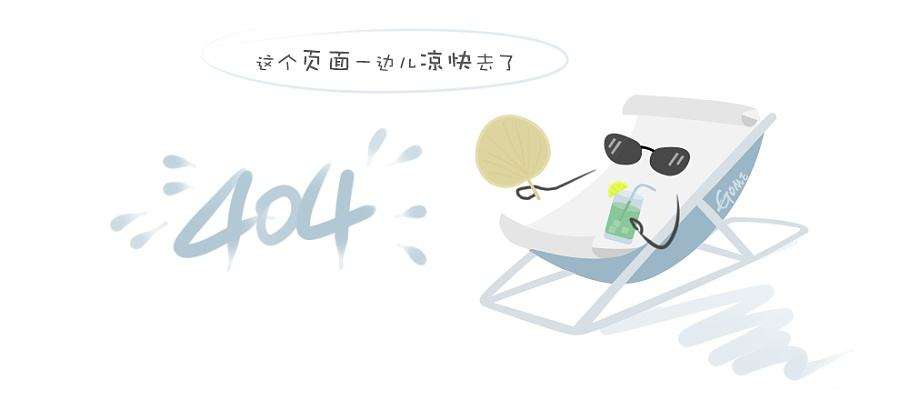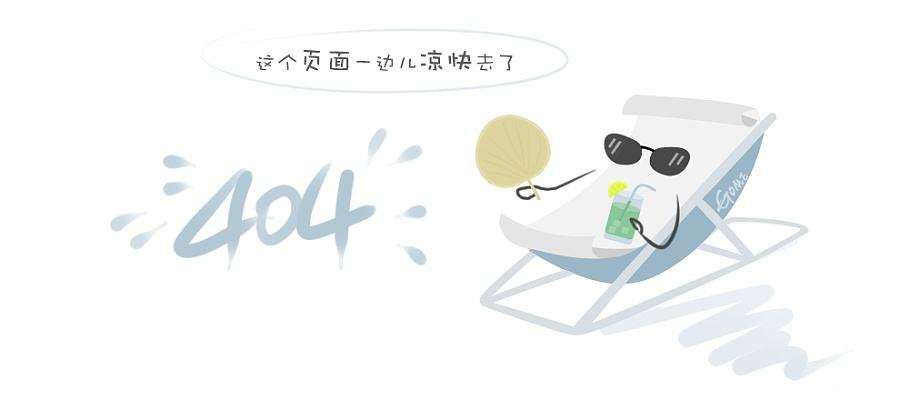健康信息
人为什么会得癌症-0008全讯注册
来源:
0008全讯注册-800cc全讯白菜
日期:2025-04-18 17:13:28
点击:906
属于:健康信息
这是个难题!在回答这个问题前,我们需要先了解什么是癌症?
 癌症的本质是人体的正常细胞在基因层面发生异常改变,突破生长限制,并逃避机体免疫系统的监管。通常我们所说的癌症泛指所有的恶性肿瘤,包括上皮癌、肉瘤、白血病等。
癌症的本质是人体的正常细胞在基因层面发生异常改变,突破生长限制,并逃避机体免疫系统的监管。通常我们所说的癌症泛指所有的恶性肿瘤,包括上皮癌、肉瘤、白血病等。
 癌症的发生是一个多因素、多阶段、复杂渐进的过程,不过致癌因素大致可以概括为遗传因素、环境致癌因素两个维度,今天小编就从这两个维度浅析这一复杂癌症的成因。
癌症的发生是一个多因素、多阶段、复杂渐进的过程,不过致癌因素大致可以概括为遗传因素、环境致癌因素两个维度,今天小编就从这两个维度浅析这一复杂癌症的成因。
一、遗传因素:基因突变
癌症的发生和发展是致癌物引起细胞遗传学改变不断累积的结果,这个过程异常复杂并且受许多体内外因素的影响,其中基因突变是重要的一环。
正常细胞向癌细胞的恶性转化并非由单一基因突变导致,而是需要多阶段、多基因突变的累积效应。从初始突变到形成临床可检测的恶性肿瘤平均需要10-30年潜伏期,这一漫长的演进过程解释了为什么50岁以上人群癌症发生率会迅速增长,验证了“年龄相关癌症发生假说”[1]。此外有些家族性的基因缺陷,也可能会导致患某种癌症风险的增加[2-4],比如,部分结肠癌、乳腺癌、肝癌等。

二、环境致癌因素:致癌主力军
目前研究人员已鉴定出许多癌症相关基因,但是罕见的遗传病带来的癌症只占一小部分,而至少80%以上的癌症是由环境因素引起的[5],所以环境致癌因素才是致癌主力军。
环境致癌因素包括化学致癌因素、生物致癌因素、物理致癌因素和不良的生活方式。
1.化学致癌因素:我们最先认识的癌症病因是从化学致癌因素开始的。1775年,英国医生pott报道患阴囊癌的患者均在孩童时代被雇为烟囱清扫工,从而推断接触煤烟是阴囊癌的致病因素。目前已有许多人工合成的和天然存在的化合物及化学混合物,经动物实验或流行病调查被证明对人致癌[2,6]。
国际癌症研究机构(iarc)将致癌物分为4类,1类致癌物是指对人类有充分证据表明其致癌性的物质。截至2024年7月,1类致癌物已增至129种。常见的1类致癌物包括:

 2.生物致癌因素:感染原是人类肿瘤的主要病因之一,目前多种病毒已被证明与人的一些癌症相关[2,7]。
2.生物致癌因素:感染原是人类肿瘤的主要病因之一,目前多种病毒已被证明与人的一些癌症相关[2,7]。

 3.物理致癌因素:目前为止,已经确定的物理致癌因素主要有电离辐射、紫外线辐射和一些矿物纤维。一般认为,物理致癌因素主要与某些职业性癌症关系密切[8-9]。
3.物理致癌因素:目前为止,已经确定的物理致癌因素主要有电离辐射、紫外线辐射和一些矿物纤维。一般认为,物理致癌因素主要与某些职业性癌症关系密切[8-9]。
 4.不良的生活方式:世界卫生组织认为癌症是一种生活方式疾病。吸烟、肥胖、缺少运动、不合理膳食习惯、酗酒、压力过大、心理紧张等都是癌症发生的危险因素。
4.不良的生活方式:世界卫生组织认为癌症是一种生活方式疾病。吸烟、肥胖、缺少运动、不合理膳食习惯、酗酒、压力过大、心理紧张等都是癌症发生的危险因素。
超重和肥胖可导致长期炎症和氧化应激[10],肥胖本身是一种低度的炎症状态。据估计,肥胖分别导致了男性和女性癌症负担的11.9%和13.1%[11],同时也增加了子宫内膜癌、食管腺癌和结直肠癌、绝经后乳腺癌、前列腺癌和肾癌的风险[12]。
吸烟是一个重要的致癌因素,它的致癌作用比许多环境致癌因素都强。吸烟可以引起80%的肺癌,并与口腔癌、咽癌、喉癌、胰腺癌、食管癌、子宫癌、膀胱癌的发生有密切关系[13]。研究显示饮酒会导致肝癌、乳腺癌、口腔癌和食管鳞状细胞癌[14]。身体活动不足,也会增加膀胱癌、乳腺癌、卵巢癌、前列腺癌的风险[15]。
大多数常见癌症致癌原因可归因于基因——环境的相互作用。改变遗传因素很难,但是改变环境因素就相对容易多了,避免接触致癌因素,戒烟限酒、平衡膳食、适量运动、心情舒畅能够有效降低癌症的发生。所以,您知道以后应该怎么做了吧!
做自己健康的第一责任人,从来不是一句简单的口号,需要用行动证明!

主要参考文献:
[1] tomasetti c, vogelstein b, parmigiani g. half or more of the somatic mutations in cancers of self-renewing tissues originate prior to tumor initiation[j]. proc natl acad sci u s a. 2013,110(6):1999-2004.
[2] schwartz sm. epidemiology of cancer. clin chem[j]. 2024,4;70(1):140-149.
[3] zhang yd, hurson an, zhang h, et al. assessment of polygenic architecture and risk prediction based on common variants across fourteen cancers[j]. nat commun. 2020,11:3353.
[4] konuma t, okada y. statistical genetics and polygenic risk score for precision medicine[j]. inflamm regen. 2021,41:18.
[5] 曾益新.肿瘤学-第4版[m].人民卫生出版社,2014.
[6] gbd 2016 alcohol collaborators. alcohol use and burden for 195 countries and territories, 1990-2016: a systematic analysis for the global burden of disease study 2016[j]. lancet. 2018,392:1015–35.
[7] chen w, xia c, zheng r, et al. disparities by province, age, and sex in site-specific cancer burden attributable to 23 potentially modifiable risk factors in china: a comparative risk assessment[j]. lancet glob health. 2019,7:e257–69.
[8] tang x, yang t, yu d, et al. current insights and future perspectives of ultraviolet radiation (uv) exposure: friends and foes to the skin and beyond the skin[j]. environ int. 2024,185:108535.
[9] wylie ag, korchevskiy aa. dimensions of elongate mineral particles and cancer: a review[j]. environ res. 2023,230:114688.
[10] ellulu ms, patimah i, khaza’ai h, et al. obesity and inflammation: the linking mechanism and the complications[j]. arch med sci. 2017,13:851–63.
[11] avgerinos ki, spyrou n, mantzoros cs, et al. obesity and cancer risk: emerging biological mechanisms and perspectives[j]. metabolism. 2019,92:121–35.
[12] de pergoa g, silvestris f. obesity as a major risk factor for cancer[j]. j obes.2013;2013:291546.
[13] maomao c, he l, dianqin s, et al. current cancer burden in china: epidemiology, etiology, and prevention[j]. cancer biol med. 2022,19(8):1121–38.
[14] gapstur s, brooks pj, thun mj, et al. cancer epidemiology and prevention[j]. new york city (ny): oxford university press. 2017, p. 213–226.
[15] reulen rc, de vogel s, zhong w, et al. physical activity and risk of prostate and bladder cancer in china: the south and east china case-control study on prostate and bladder cancer[j]. plos one. 2017,12:e0178613.


一、遗传因素:基因突变
癌症的发生和发展是致癌物引起细胞遗传学改变不断累积的结果,这个过程异常复杂并且受许多体内外因素的影响,其中基因突变是重要的一环。
正常细胞向癌细胞的恶性转化并非由单一基因突变导致,而是需要多阶段、多基因突变的累积效应。从初始突变到形成临床可检测的恶性肿瘤平均需要10-30年潜伏期,这一漫长的演进过程解释了为什么50岁以上人群癌症发生率会迅速增长,验证了“年龄相关癌症发生假说”[1]。此外有些家族性的基因缺陷,也可能会导致患某种癌症风险的增加[2-4],比如,部分结肠癌、乳腺癌、肝癌等。

二、环境致癌因素:致癌主力军
目前研究人员已鉴定出许多癌症相关基因,但是罕见的遗传病带来的癌症只占一小部分,而至少80%以上的癌症是由环境因素引起的[5],所以环境致癌因素才是致癌主力军。
环境致癌因素包括化学致癌因素、生物致癌因素、物理致癌因素和不良的生活方式。
1.化学致癌因素:我们最先认识的癌症病因是从化学致癌因素开始的。1775年,英国医生pott报道患阴囊癌的患者均在孩童时代被雇为烟囱清扫工,从而推断接触煤烟是阴囊癌的致病因素。目前已有许多人工合成的和天然存在的化合物及化学混合物,经动物实验或流行病调查被证明对人致癌[2,6]。
国际癌症研究机构(iarc)将致癌物分为4类,1类致癌物是指对人类有充分证据表明其致癌性的物质。截至2024年7月,1类致癌物已增至129种。常见的1类致癌物包括:





超重和肥胖可导致长期炎症和氧化应激[10],肥胖本身是一种低度的炎症状态。据估计,肥胖分别导致了男性和女性癌症负担的11.9%和13.1%[11],同时也增加了子宫内膜癌、食管腺癌和结直肠癌、绝经后乳腺癌、前列腺癌和肾癌的风险[12]。
吸烟是一个重要的致癌因素,它的致癌作用比许多环境致癌因素都强。吸烟可以引起80%的肺癌,并与口腔癌、咽癌、喉癌、胰腺癌、食管癌、子宫癌、膀胱癌的发生有密切关系[13]。研究显示饮酒会导致肝癌、乳腺癌、口腔癌和食管鳞状细胞癌[14]。身体活动不足,也会增加膀胱癌、乳腺癌、卵巢癌、前列腺癌的风险[15]。
大多数常见癌症致癌原因可归因于基因——环境的相互作用。改变遗传因素很难,但是改变环境因素就相对容易多了,避免接触致癌因素,戒烟限酒、平衡膳食、适量运动、心情舒畅能够有效降低癌症的发生。所以,您知道以后应该怎么做了吧!
做自己健康的第一责任人,从来不是一句简单的口号,需要用行动证明!

主要参考文献:
[1] tomasetti c, vogelstein b, parmigiani g. half or more of the somatic mutations in cancers of self-renewing tissues originate prior to tumor initiation[j]. proc natl acad sci u s a. 2013,110(6):1999-2004.
[2] schwartz sm. epidemiology of cancer. clin chem[j]. 2024,4;70(1):140-149.
[3] zhang yd, hurson an, zhang h, et al. assessment of polygenic architecture and risk prediction based on common variants across fourteen cancers[j]. nat commun. 2020,11:3353.
[4] konuma t, okada y. statistical genetics and polygenic risk score for precision medicine[j]. inflamm regen. 2021,41:18.
[5] 曾益新.肿瘤学-第4版[m].人民卫生出版社,2014.
[6] gbd 2016 alcohol collaborators. alcohol use and burden for 195 countries and territories, 1990-2016: a systematic analysis for the global burden of disease study 2016[j]. lancet. 2018,392:1015–35.
[7] chen w, xia c, zheng r, et al. disparities by province, age, and sex in site-specific cancer burden attributable to 23 potentially modifiable risk factors in china: a comparative risk assessment[j]. lancet glob health. 2019,7:e257–69.
[8] tang x, yang t, yu d, et al. current insights and future perspectives of ultraviolet radiation (uv) exposure: friends and foes to the skin and beyond the skin[j]. environ int. 2024,185:108535.
[9] wylie ag, korchevskiy aa. dimensions of elongate mineral particles and cancer: a review[j]. environ res. 2023,230:114688.
[10] ellulu ms, patimah i, khaza’ai h, et al. obesity and inflammation: the linking mechanism and the complications[j]. arch med sci. 2017,13:851–63.
[11] avgerinos ki, spyrou n, mantzoros cs, et al. obesity and cancer risk: emerging biological mechanisms and perspectives[j]. metabolism. 2019,92:121–35.
[12] de pergoa g, silvestris f. obesity as a major risk factor for cancer[j]. j obes.2013;2013:291546.
[13] maomao c, he l, dianqin s, et al. current cancer burden in china: epidemiology, etiology, and prevention[j]. cancer biol med. 2022,19(8):1121–38.
[14] gapstur s, brooks pj, thun mj, et al. cancer epidemiology and prevention[j]. new york city (ny): oxford university press. 2017, p. 213–226.
[15] reulen rc, de vogel s, zhong w, et al. physical activity and risk of prostate and bladder cancer in china: the south and east china case-control study on prostate and bladder cancer[j]. plos one. 2017,12:e0178613.
组拟稿:刘德
审核:张盼
审核:张盼